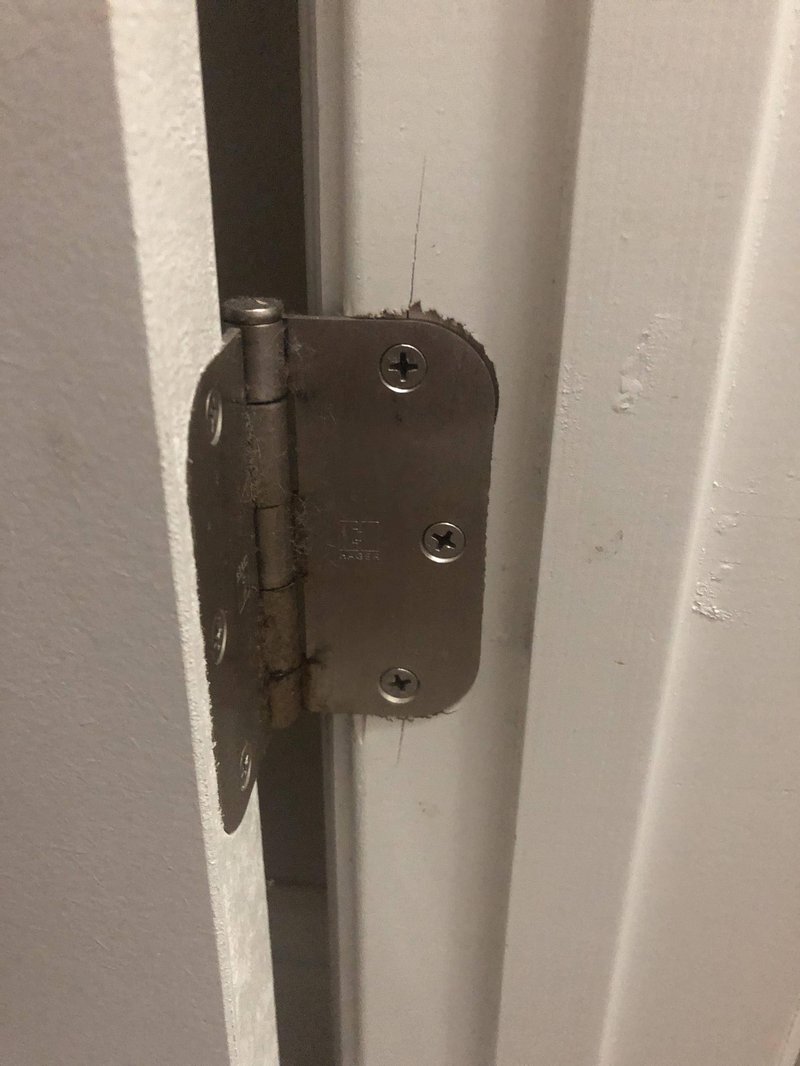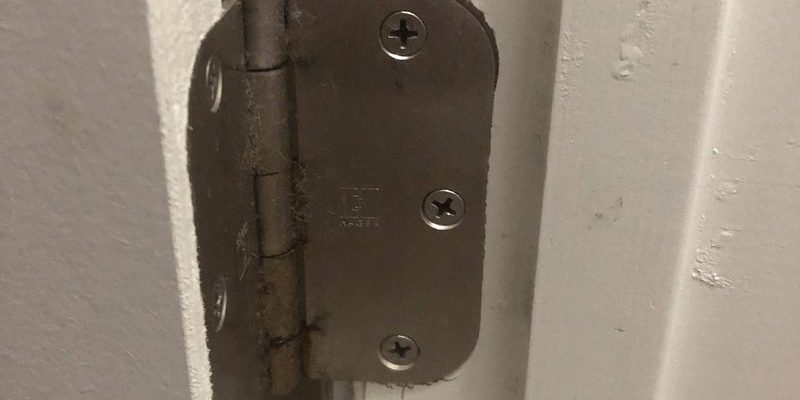
Honestly, a door hinge rattle can sneak up on anyone, whether you live in a new build with shiny Schlage hinges or an older home with a battered brass set. It’s a small problem that feels big because you hear it every time the door moves. You might be wondering if it’s a sign something’s about to break or if the wind’s just making trouble. The good news? Most rattling hinges are easy to fix, once you get why they’re making noise in the first place.
What Causes an Exterior Door Hinge to Rattle?
Here’s the thing: a rattling hinge isn’t always about bad hardware. Most of the time, it’s a mix of movement, space, and vibration. Imagine you’re holding two puzzle pieces together, but one’s just a little too small—that gap lets them wiggle and clack against each other, which is basically what’s happening with your door hinge and frame.
Hinges are supposed to keep your door steady, but anything that throws off their fit—like loose screws, worn parts, or a slightly warped door—can make them rattle. The outside of your home faces a whole range of weather, which means moisture, temperature swings, and even paint buildup can mess with hinge tightness. Over time, you get a tiny gap that wasn’t there before, and the hinge starts to move every time the door does.
Another overlooked culprit? Settling. Houses shift, doors sag, and sometimes the frame doesn’t support the hinge like it used to. Even a millimeter of change is enough for a “click” or “clack” to creep in.
Loose Screws: The Most Common Rattle Source
Let me explain: when someone says their door hinge is rattling, my first question is always about the screws. Hinges are held in place by several short screws that dig into the door and frame. If one starts to back out, the whole hinge can wiggle—giving you that unmistakable rattle.
It’s like sitting on a wobbly chair. All it takes is one loose leg, and suddenly the whole thing moves every time you shift your weight. Doors work the same way. When a hinge screw slips out (or if it was never tight to begin with), the hinge can’t clamp down tight, so it shimmies with every vibration.
- Check each screw using a screwdriver, not just your fingers.
- If a screw keeps turning and won’t grab, the hole may be stripped—meaning it’s too big for the screw threads.
- You can fix a stripped hole using a longer screw, a wood dowel, or special repair kits.
If the screws feel tight but the hinge still rattles, the problem could be inside the hinge itself or with the door alignment.
Worn-Out or Poor-Quality Hinges
Exterior doors see a lot of action, and cheap or old hinges can wear out quicker than you’d think. If your door came with basic hardware, or if you notice flaking metal, squeaking, or visible play in the hinge when you jiggle it, you’re probably due for an upgrade.
A hinge has moving parts: the pins, barrels, and the leaves that mount to the frame and door. With time, repeated opening and closing—plus the stress of slamming or swinging in the wind—can widen the gap around the pin or even bend part of the hinge. This lets the leaves or the pin itself move just enough to “click” or rattle.
If your hinge rattles even when the screws are tight, and you notice visible gaps or movement, it’s time to swap it for a new, heavy-duty model.
Not sure what you’re looking at? Try this: open the door halfway, grip the hinge, and gently shake it. If the plates separate or the middle pin wobbles, that’s your cue the hinge is shot.
Improper Door Alignment Can Cause Rattling
Sometimes, the hinge isn’t even the real issue—it’s the way your door hangs in the frame. Weather, settling, or even a poor installation can leave a small gap where the door shouldn’t move, letting the hinge “pop” against the frame with every big swing.
Think of it this way: the hinge is doing its job, but the door isn’t meeting the frame solidly. Every time you open or close the door, you’re basically giving the hinge a chance to jump around and announce itself. This is super common in older homes, where frames have settled or warped.
How do you spot this? Look for:
- A gap at the top or bottom of the door when it’s closed.
- The door scraping along the floor or threshold.
- Light seeping through the frame, especially near the hinges.
Adjustments might include tightening the hinge screws, adding shims behind the hinges, or even rehanging the door. If you’re comfortable with minor tools, this sort of troubleshooting is usually a DIY fix.
Weather and Moisture Changes Affect Hinges
Here’s something lots of people forget: weather plays games with your exterior doors. Wood swells in wet weather and shrinks when it’s dry, which can make the door either press extra hard against the frame (sticking) or loosen up and rattle.
If you hear the rattle only during certain seasons, that’s a pretty big clue. Rain, humidity, and big temperature swings can make the wood around your hinges expand or contract, creating a temporary gap. Sometimes, old paint or caulk can also crack or flake, adding to the space that lets a hinge move.
And it’s not just wood! Even metal doors and modern composite setups aren’t immune. Their frames can twist or shift ever so slightly as the ground around your house moves with moisture and freeze/thaw cycles.
If you notice the rattling comes and goes, try adjusting the screws or lubricating the hinge pin to see if you can quiet things down until the weather changes.
Using the Wrong Hinge for Your Door Style
Not all hinges are created equal. Exterior doors need heavy-duty, weather-resistant hinges—usually from reputable brands like Schlage or Baldwin. If a previous owner or contractor swapped in a basic interior hinge on your front door, you’ll probably hear rattling, clicking, or even creaking after a few months.
Exterior hinges are designed to hold more weight, resist rust, and absorb constant use. Using the wrong size or type leaves the door wobbling with every knock or gust of wind. It’s a bit like trying to hang a coat rack with push pins: it’ll hold up for a while, but eventually, something gives.
If you’re replacing a rattling hinge, check the packaging or markings to confirm it’s rated for exterior use. Look for labels that mention security, outdoor/weather-resistance, or stainless steel for best results.
Quick Fixes for a Rattling Exterior Door Hinge
Here’s a simple troubleshooting routine you can try at home, no special skills required. Going step by step helps you figure out exactly where the issue is before you start swapping parts out or calling help.
- Tighten every screw: Use a screwdriver (not a drill) to snug up each screw on every hinge plate, both in the door and the frame.
- See if the hinge moves: Open the door, hold the hinge, and gently jiggle it. If it moves side to side or the pin lifts up easily, the hinge might be worn out.
- Test the pin: Pull the hinge pin out, clean and lubricate it, and tap it back into place. Sometimes grime or rust is the cause of the rattling sound.
- Check alignment: Look at the space around the door in the frame. If it’s uneven, you may need to adjust or shim the hinges.
Stay patient—these tweaks usually solve most rattle problems unless your hardware is too old to save.
When to Replace vs. Repair Your Exterior Door Hinge
Sometimes a little troubleshooting isn’t enough, and you have to decide whether to repair or outright replace your hinge. Here’s how I think about it: if tightening the screws and lubing the pin doesn’t solve the rattle, and you see clear signs of wear, it’s worth swapping in a new, high-quality hinge.
Repairs like filling stripped screw holes or adding shims are great if the door and frame are in good shape but just need a bit of extra support. But if the hinge is visibly bent, cracked, or rusted through, you’re just putting a band-aid on a bigger problem.
Pro tip: Upgrading to a proper exterior-rated hinge—especially one that matches your door’s weight and style—can stop rattling for years to come.
Always compare universal hinges and brand-specific upgrades. Universal models fit most doors, but if your home builder used something unique (mix of wood, steel, or a custom setup), matching the brand and size—like picking a new Schlage hinge—will guarantee a perfect fit.
Wrapping Up: A Quiet Door Makes Home Sweeter
Dealing with a rattling exterior door hinge is nobody’s idea of fun, but honestly? It’s usually a quick fix once you figure out if it’s loose screws, a worn-out hinge, or a misaligned door. With a few basic tools—and a little patience—you can quiet things down and make opening your door feel smooth again. And if you ever get stuck, remember: it’s always better to address a small rattle now than to live with a growing annoyance (or wait for a big repair bill down the line).
So, next time you hear that telltale shake in the frame, you’ll know just where to look, what to try, and when to swap out for something sturdier. Your ears—and your neighbors—will thank you.
